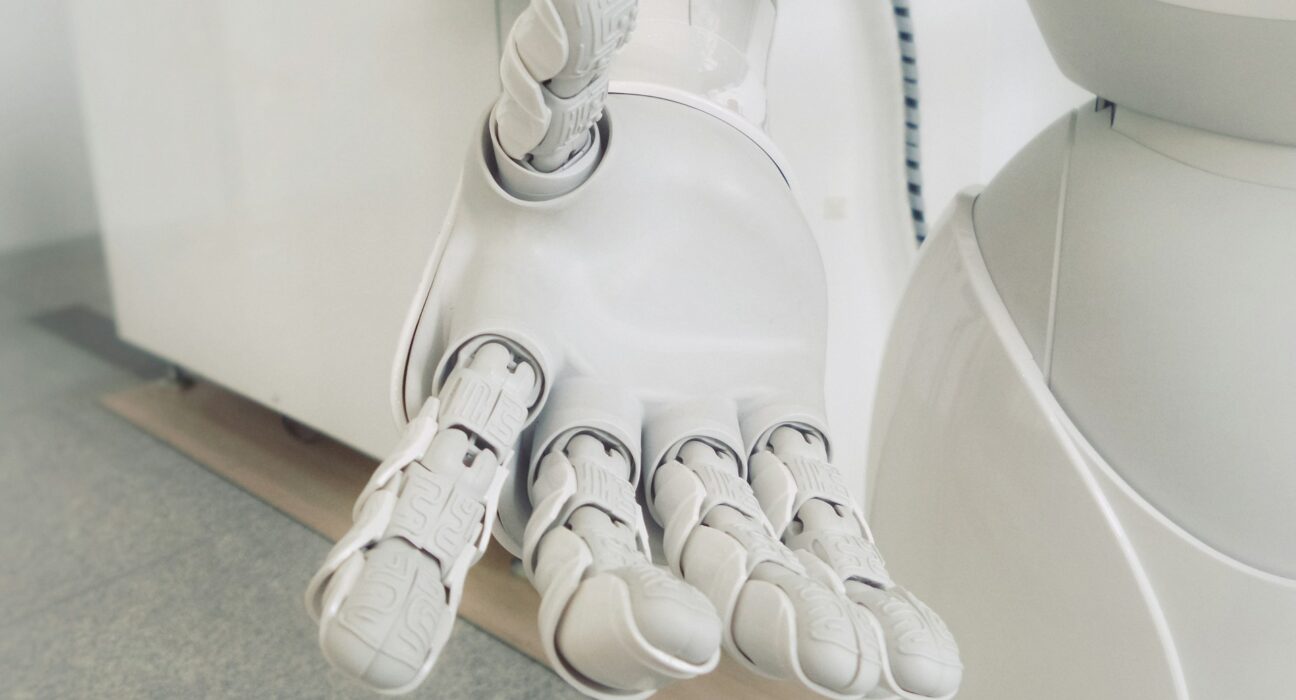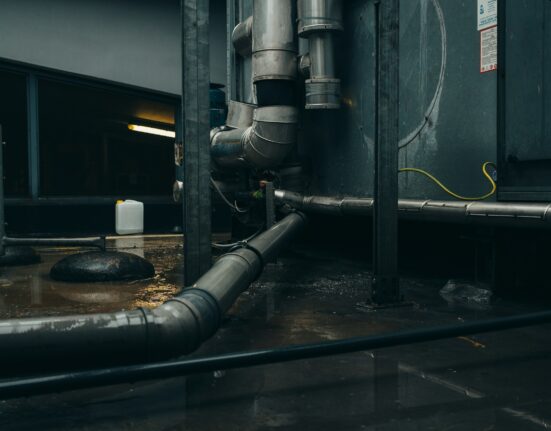From robotic bees to solar-powered cars, technology is transforming everyday life and revolutionizing how we protect the environment. With automation and innovation at the forefront of environmental conservation, technology is dramatically reducing our carbon footprint and minimizing our impact on nature. Robotics technology and AI are streamlining everything from waste disposal to water treatment, allowing us to conserve natural resources and protect our planet’s fragile ecosystems. And green tech is now more affordable and accessible than ever, providing low-cost, energy-efficient solutions that serve both humans and the environment. As we continue to face the challenges of climate change, it’s clear that technology must play a vital role in fostering sustainability and creating a greener future for generations to come.
1. The Intersection of Technology and Environmental Conservation
In this day and age, technology is an ever-present part of our everyday lives. From our smartphones to automated coffee makers, innovation surrounds us constantly. However, there is one area in which technology is making a particularly significant impact – environmental conservation. Through the use of robotics and automation, we are seeing incredible advancements in smart farming techniques, which reduce the need for harmful pesticides and herbicides. Additionally, with the rise of renewable energy sources, we are able to mitigate our reliance on fossil fuels, cutting down on greenhouse gas emissions. These advancements show that technology and environmental conservation are no longer separate entities but intersecting fields working together towards a more sustainable future.
The Role of Technology:
- Data Collection and Analysis: Advanced technologies like remote sensing, Geographic Information Systems (GIS), and drones enable precise monitoring of ecosystems and biodiversity.
- Automation and Efficiency: Automation technologies optimize resource usage, reducing waste and enhancing productivity in various industries.
- Communication and Awareness: Digital platforms and social media spread awareness about environmental issues, mobilizing global communities toward conservation efforts.
2. Pioneering Sustainability Through Innovation
Sustainability and environmental preservation have always been intertwined. With every passing moment, we are coming up with new ways to reduce our carbon footprint and live a more eco-friendly life. One crucial player in this game of preservation is technology. Technological innovations have enabled us to come up with new sustainable practices that balance our need for ecological preservation with our human needs. From robotics to automation, technology finds its way into our everyday life and helps us reduce our negative impact on the planet. Whether it’s in the form of innovations in renewable energy or automation techniques that conserve resources, technology has brought about revolutionary changes in the way we live our lives and help preserve our planet for future generations.
Sustainable Practices:
- Renewable Energy: Solar, wind, and hydroelectric power generation technologies reduce dependence on fossil fuels, curbing greenhouse gas emissions.
- Smart Agriculture: Precision farming and IoT-based solutions optimize water usage, soil health, and crop yields, promoting sustainable agriculture.
- Waste Management: Technologies like waste-to-energy conversion and recycling systems minimize landfill use and manage waste more effectively.
Spotlight on Innovations:
- Vertical Farming: Leveraging hydroponic and aeroponic systems, vertical farms produce high-yield crops in urban settings, reducing transportation emissions and conserving land.
- Energy-Efficient Buildings: Smart building technologies, incorporating energy-efficient systems and materials, significantly reduce energy consumption and carbon footprints.
3. Green Tech: Transforming Industries
Green technology, or green tech, encompasses innovations designed to mitigate environmental impact and promote sustainability. It transforms traditional industries by integrating eco-friendly practices and solutions.
Key Areas of Green Tech:
- Transportation: Electric vehicles (EVs) and public transportation systems powered by renewable energy reduce air pollution and dependency on fossil fuels.
- Manufacturing: Cleaner production technologies and sustainable supply chain management minimize industrial waste and emissions.
- Construction: Sustainable construction practices, including the use of eco-friendly materials and green buildings standards (e.g., LEED certification), enhance environmental performance.
Impact on Industries:
- Automotive Industry: The shift to EVs accelerates the transition to cleaner transportation, supported by innovations in battery technology and charging infrastructure.
- Textile Industry: Eco-friendly fabrics and sustainable manufacturing processes reduce water consumption, chemical use, and waste in textile production.
- Food Industry: Plant-based alternatives and lab-grown meats offer sustainable protein sources, decreasing the environmental footprint of food production.
4. Innovation: Driving Environmental Solutions
Innovation is a powerful tool in today’s fast-paced world, driving change and transformation across sectors. The environmental challenges of our time require creative and cutting-edge solutions, and technology is at the forefront of this movement. Robotics and automation are innovations that have made their way into our everyday lives, offering new possibilities for conservation and sustainability. By fostering collaboration and encouraging new approaches, we can achieve breakthroughs that address global challenges and create a better world for future generations. With innovation as a driving force, we can unlock new potential and create smarter, more efficient solutions to environmental challenges.
Prominent Innovations:
- Artificial Intelligence (AI): AI-powered analytics enhance environmental monitoring and decision-making, predicting climate patterns and optimizing resource management.
- Blockchain Technology: Blockchain ensures transparency and traceability in supply chains, promoting ethical and sustainable practices.
- Biotechnology: Advances in biotechnology, such as bioremediation and genetic engineering, aid in pollution control and habitat restoration.
Collaborative Efforts:
- Public-Private Partnerships: Collaboration between governments, private enterprises, and NGOs drives innovation and the implementation of green tech solutions.
- Research and Development: Investment in R&D accelerates the discovery of novel technologies and methods for environmental protection.
5. The Future of Technology in Environmental Conservation
The rapid pace of technological innovation is revolutionizing the way we live our everyday lives, and it’s also transforming the fight for environmental conservation. Thanks to cutting-edge robotics and automation, we’re able to perform tasks that were previously out of reach, and with greater precision and efficiency than ever before. From agriculture to waste management to transportation, emerging technologies are making it possible to minimize our impact on the planet and protect the delicate natural ecosystems that sustain us. As we continue to integrate these advancements into our daily routines and industry practices, we’re paving the way for a more sustainable future, one in which innovation is used not just to make our lives easier, but also to protect the planet we call home.
Future Trends:
- Internet of Things (IoT): Expanding IoT networks will enable real-time environmental monitoring and adaptive management strategies.
- Quantum Computing: Quantum computing promises to revolutionize data analysis, offering unprecedented capabilities for solving complex environmental challenges.
- Space Technology: Satellite technology and space exploration will provide new insights into Earth’s ecosystems and climate systems, informing global conservation efforts.
Call to Action:
Innovation in technology has never been more relevant to environmental conservation than it is today. As eco-conscious consumers, tech enthusiasts, and environmental activists, we hold the key to driving technological adoption and innovation in sustainable practices. With the advent of robotics and automation, opportunities for everyday life are arising. By advocating for green tech, we can take part in fostering innovation that’s environmentally friendly. It’s time we come together and harness the power of technology towards a common goal of creating a greener and healthier planet.
Conclusion
Technology has revolutionized the way we live our everyday lives, from the smartphones in our pockets to the automated systems in our workplaces. But the significance of technology goes beyond simply making our lives more convenient. It has the potential to transform industries and offer innovative solutions to pressing ecological challenges, particularly in the area of environmental conservation. Robotics, for example, can help with tasks such as precision farming and monitoring wildlife populations. Automation can reduce waste in manufacturing processes, while innovative green technology can revolutionize the energy industry. Embracing these innovations and fostering collaboration between different fields will be essential for achieving a sustainable future for generations to come. Technology has the power to make a positive impact on the world we live in, and we must use it wisely and creatively to address the challenges we face.








Leave feedback about this